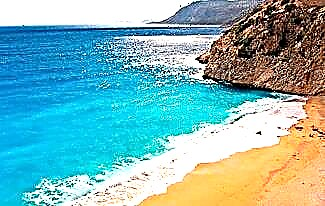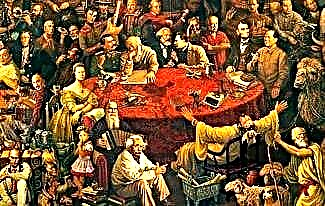Neva battle - the battle that took place on July 15, 1240 on the Neva River, near the village of Ust-Izhora, between the Novgorod Republic and the Karelians against the Swedish, Norwegian, Finnish and Tavastian armies.
Obviously, the purpose of the invasion was to establish control over the mouth of the Neva and the city of Ladoga, which made it possible to seize the main region of the trade route from the Varangians to the Greeks, which had been in the hands of Novgorod for over 100 years.

Before the battle
At that time, Russia was going through not the best times, since it was under the yoke of the Tatar-Mongols. In the summer of 1240, Swedish ships landed on the banks of the Neva estuary, where they landed with their allies and Catholic priests. They are located at the confluence of Izhora and Neva.
The borders of the Novgorod territory were guarded by warriors from the Finno-Ugric tribe Izhora. It was they who informed Prince Alexander Yaroslavovich of the arrival of enemy ships.
As soon as Alexander found out about the approach of the Swedes, he decided to independently repulse the enemy, without asking for help from his father Yaroslav Vsevolodovich. When the prince's squad moved to defend their lands, rebels from Ladoga joined them on the way.
According to the traditions of that time, all of Alexander's army gathered at the Cathedral of St. Sophia, where they received a blessing for the war from Archbishop Spiridon. Then the Russians set out on their famous campaign against the Swedes.
Battle progress
The battle of the Neva took place on July 15, 1240. According to the chronicles, the Russian squad consisted of 1300-1400 soldiers, while the Swedish army had about 5000 soldiers.
Alexander intended to carry out a lightning double blow along the Neva and Izhora in order to cut off the knights' escape route and deprive them of their ships.

The battle of the Neva began at about 11:00. The Russian prince ordered to attack the enemy regiments that were on the coast. He pursued the goal of striking the center of the Swedish army in such a way that the soldiers who remained on the ships did not come to his aid.
Soon the prince found himself at the epicenter of the battle. During the battle, the Russian infantry and cavalry had to unite in order to jointly throw the knights into the water. It was then that the landmark duel between Prince Alexander and the Swedish ruler Jarl Birger took place.
Birger raced on a horse with a raised sword, and the prince with a spear put forward. The Jarl believed that the spear would either slide over his armor or break against them.
Alexander, at full gallop, struck the Swede in the nose bridge under the visor of the helmet. The visor flew off his head and the spear sank into the knight's cheek. Birger fell into the arms of the squires.
And at this time, along the coast of the Neva, the prince's squad destroyed the bridges, pushing back the Swedes, capturing and drowning their augers. The knights were dismembered into separate parts, which the Russians crushed, and one by one drove to the shore. In a panic, the Swedes started swimming, but heavy armor pulled them to the bottom.
Several enemy units managed to get to their ships, on which they began to hastily sail away. Others fled into the forest, hoping to hide from the Russian soldiers. The swiftly conducted battle of the Neva brought a brilliant victory to Alexander and his army.
Battle Result
Thanks to the victory over the Swedes, the Russian squad managed to stop their march to Ladoga and Novgorod and thereby prevent the danger of coordinated actions by Sweden and the Order in the near future.
The losses of the Novgorodians amounted to several dozen people, including up to 20 noble soldiers. The Swedes lost several tens or hundreds of people in the Battle of the Neva.
Prince Alexander Yaroslavich received the nickname "Nevsky" for his first significant victory. After 2 years, he will stop the invasion of the Livonian knights during the famous battle on Lake Peipsi, better known as the Battle of the Ice.
It is worth noting that references to the Battle of the Neva are found only in Russian sources, while neither in Swedish, nor in any other documents about it.
Photo of the Neva battle















